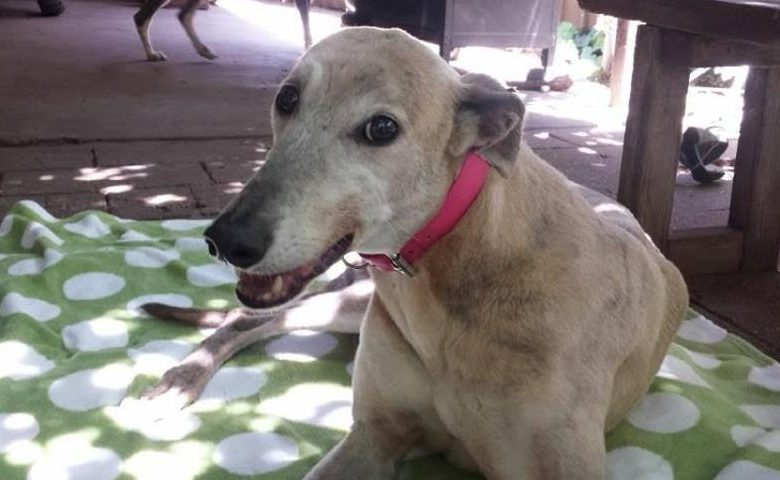All breeds of dogs are interested in chasing cats – greyhounds are so much faster that they stand a far greater chance of catching them! Yet some greyhounds can settle with small dogs and cats and it is one of the most important issues to deal with when you first adopt a dog. Always be aware that although your dog may be completely safe with his own family cat–off territory, he may view anything that runs as fair game – so be prepared!
Your greyhound may be classed as ‘cat-tolerant’ when he first arrives with you, but it is imperative that sensible precautions are taken until you are confident of your dog’s temperament. It is not advisable to leave your dog alone with your cat in the initial stages.
If you have a keen greyhound, it can take some considerable time before you can trust him/her with a cat. Always keep a greyhound muzzled when you make the introduction. Some cats will spend many months watching the dog from the highest place possible; others might be willing to give the newcomer a blow to show who is boss. It should not be forgotten that we have two temperaments to work with in this introduction.
If a cat is not used to dogs in its home, there is a risk that it might pack its bags and leave home. It is essential to ensure that the cat has a collar, microchip and identity tag to cover this possibility.
When you are feeling more confident, replace the muzzle and take away the collar and lead. In time, the muzzle can also be removed. Your greyhound will accept your rules, and accept your cat as a member of the family. Nevertheless, a warning should be sounded: Cats outside the home, and those passing through your yard, may well still be regarded as fair game for a chase and possible attack – all necessary precautions should be taken.
INTRODUCING YOUR NEW “CAT-TOLERANT” DOG TO YOUR CAT
- Use the muzzle provided and have the dog on a lead.
- Make sure the dog and cat meet from the start, preferably in a small room.
- Ensure the cat cannot run away during the introduction, as this will promote a chase instinct before they are both aware that they are members of the same family and need to get on.
- Stroke the cat then the dog, and you are passing the scent from one to the other.
- Keep introducing the cat to the dog to gauge his interest, try to allow the cat to walk through his legs, and then raise the cat to eye level so they can make eye contact. Ensure the safety of the dog’s eyes if the cat is showing any signs of aggression.
- At this point, if all the signs are right, e.g. the dog has acknowledged the cat but is either frightened of it or gently wagging its tail it is time to remove the muzzle, but keeping the dog on the lead and going through the previous steps again.
- When you are happy with the reaction again, then reverse the process and have the muzzle on without the lead.
- By this time the cat and dog should be getting the message that they are going to need to get on as they are both or all part of the same family.
Remember cats will be fair game if they are out of their home environment. It is all about the dog recognising the cat as part of its family. This bonding process has to still take place even for a dog that has lived with cats in a previous home. Do not shut the cat away as this promotes great interest.
The cat’s reaction is also important and can make or break the situation. Dogs have been returned to rescue groups because they are being terrorised by the cats! Do not let the dog and cat go out in the garden together/. If a cat comes hurtling over a fence the dog may not recognise it as the family cat, and a chase situation could occur.
As the other key fact is the dog recognising the cat as part of its new family, it must be remembered that the dog is not going to get on with other people’s cats unless they are introduced in the correct way.
If you are worried about your neighbour’s cats, check the garden before letting the dog out, and make a noise that the cats will learn to associate with the dog being around, i.e. lightly banging an object, or ringing a small bell. The cats will soon avoid the garden when they know of the dog’s presence. If your street is full of cats use the muzzle provided, especially at first when you need to gauge the interest of the dog on walks.
Remember, most dogs do not get on with all cats. If you went to a pound there would be all breeds types and many of those dogs would not be suitable to live with cats.
Last modified: November 18, 2023




